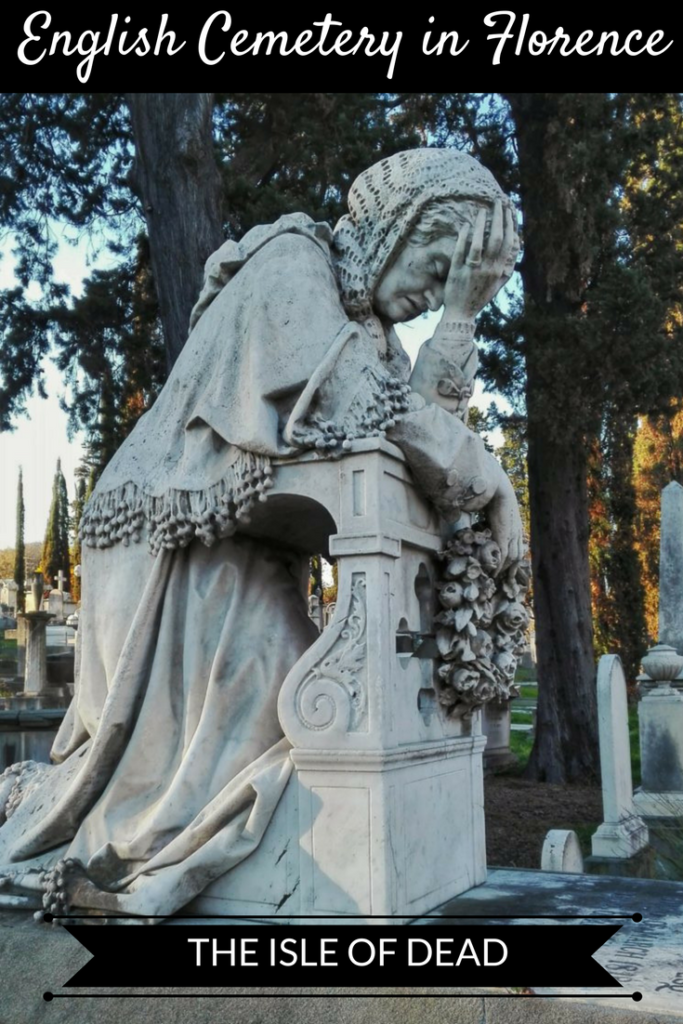The English Cemetery of Florence, the Isle of the Dead
Standing somewhat unpropitiously in the middle of a ring of traffic, on a verdurous hill with elegant marblework, the English cemetery of Florence is without question the most magnificent of urban roundabouts. Everybody who passes is intrigued by this great green and marble island looming over the busy boulevard on which they drive, but hardly anyone decides to stop, cross the road, and explore.
If they had taken this step, they would have discovered a site rich in history, home to many fascinating stories of well-known characters, and with an abundance of high-quality artistry.
I am a local licensed tour guide and I love this place! Learn more about my private tours of the English Cemetery at the end of this post!
The English Cemetery of Florence
You might also like: The Monumental Porte Sante Cemetery of Florence
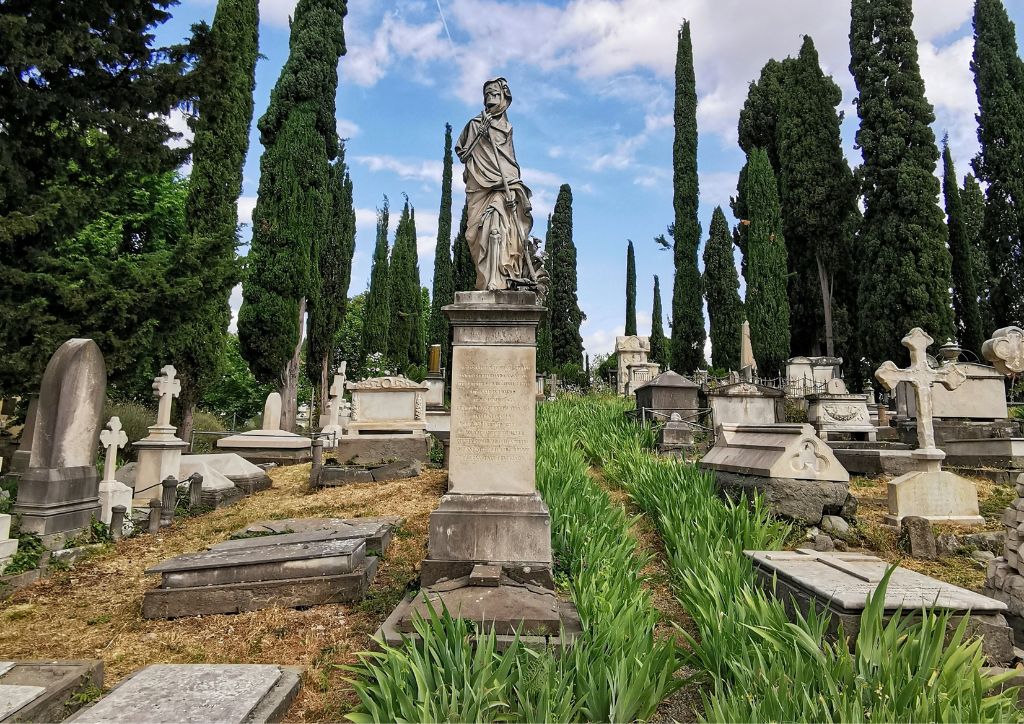
A brief history of the English Cemetery of Florence
This is a Protestant cemetery. Over 1400 men and women of 16 different nationalities are buried here, but in common parlance it has always been known as Il Cimitero degli Inglesi, the English Cemetery, because the British made up the largest foreign community in Florence.
However, it’s existence is in fact owed to the Swiss, as it was the Swiss Reformed Church who bought this piece of land outside the city walls and began construction in 1828.
In 1865 Florence became the capital of Italy and was completely reorganized by the architect Giuseppe Poggi, who demolished the walls and placed avenues in their stead. In so doing, Poggi redraw the borders of the Piazzale Donatello and defined the cemetery’s ovular shape and position at the center of a large road. Most visibly, the wall enclosing the area was replaced by railings.
The Isle of the Dead
Thanks to its peculiar position, Florentines began to call the English cemetery L’isola dei Morti (Isle of the Dead). This evocative name was used by the Swiss symbolist painter Arnold Bocklin for his most famous work, having taken inspiration from this poignant array of monuments.
Bocklin knew the site well, as one of his daughters is buried here. Within a few years, his painting had both inspired and haunted many people, from the Russian composer Rachmaninov, who wrote a work of the same title, to Freud, who told of his state of fixation upon seeing the painting. And even Hitler, who bought one of the three existing copies. The piece provoked a chain of successive works attempting to emulate its discomforting effect.
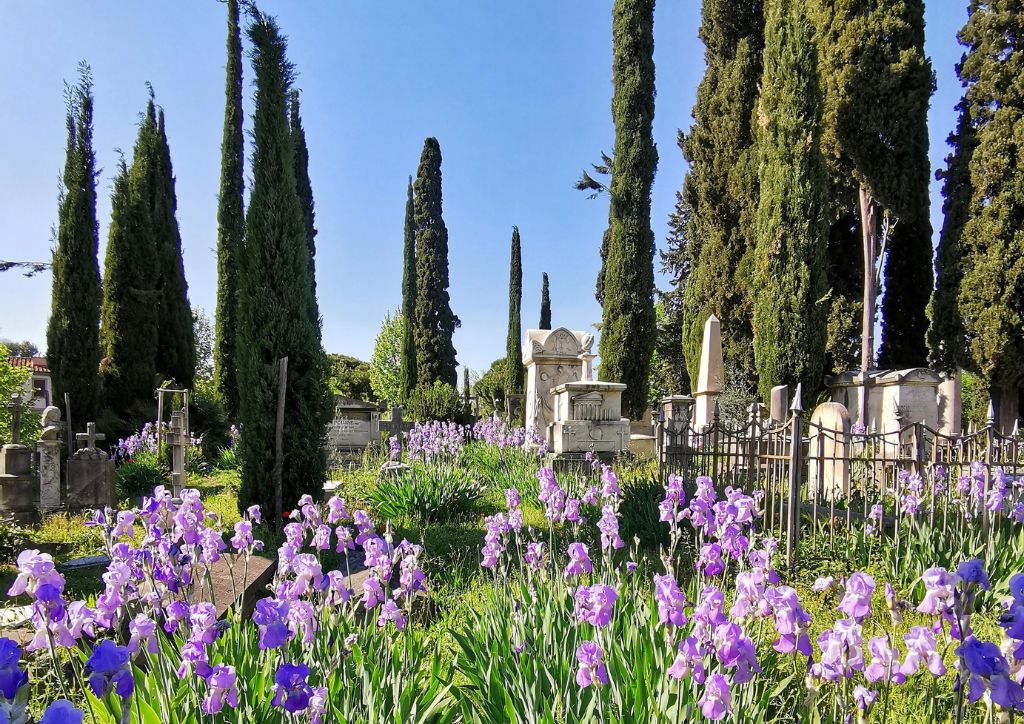
Famous burials at the English Cemetery in Florence
The most famous person buried here is surely Elizabeth Barrett Browning, an English poet who lived in Florence with her husband Robert Browning, also a successful poet. Her tomb inspired another great poet, Emily Dickinson, to write The Soul Selects her own Society, which quotes Browning’s work.
The famous American preacher and anti-slavery activist, Reverend Theodor Parker, is buried here. His grave has been visited through the centuries by some of the most important activists such as Frederick Douglass.
Also buried here are the English writer Walter Savage Landor, the American sculptor Hiram Powers, and Fanny Hunt, wife of the English pre-Raphaelite painter William Holman Hunt, who made her funeral monument.
The last descendants of William Shakespeare, Beatrice and Edward Claude Shakespeare, are also entombed here.
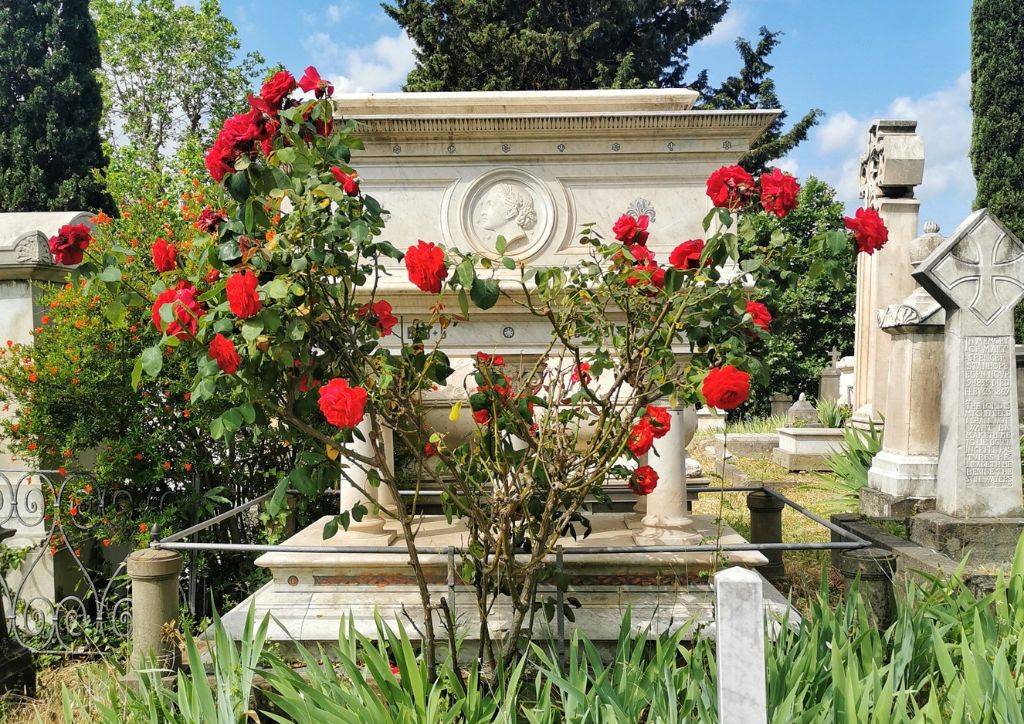
An eclectic journey through art
Visiting the Isle of the Dead is like taking a trip through time and space. Thousands of foreigners died in Florence (mostly according to their own wish!) and their graves carry the influence of their backgrounds. Represented atop the Piazzale Donatello are not only 16 different nationalities, but also a multitude of different ways of conceiving death, displayed through art, symbolism, and even the fonts in which the names of the dead and Bible passages are written.
The various tomb decorations point to the multicultural deceased housed here, with influences from places so diverse as Nubia, Israel, Northern Europe, and Egypt all on display.
The English cemetery of Florence and ancient Egypt
There is a close relationship between this cemetery and the world or ancient Egypt. In fact, the very first person to be buried here waw Nadezhda de Santis, a black Nubian slave. She had been brought to Florence by the famous archaeologist Ippolito Rossellini after his expedition in Egypt in 1828. He was so negatively impressed by the slave market that decided to buy a teenage girl just to set her free.
Egyptian symbology is plentiful here. Strolling amongst the tombs you can see pyramids, obelisks, sun disks, and scarab beetles. The nineteenth century saw the first European archaeological expeditions and the subsequent vogue for Egyptian art and culture within the continent. In addition to the erection of fake Egyptian ruin in romantic gardens and the Egyptianization of European palaces and pavilions, funerary monuments inevitably began to take on Egyptian themes. The Egyptians’ expansive meditations on death provided a wealth of complex symbols for the expression of mourning and hope of rebirth. The same symbols that men and women more than 1800 years later, in lands thousands of miles away from their creation, would use to mark the passing of loved ones. In Florence only a select few had the education and travel opportunities to have encountered these symbols.
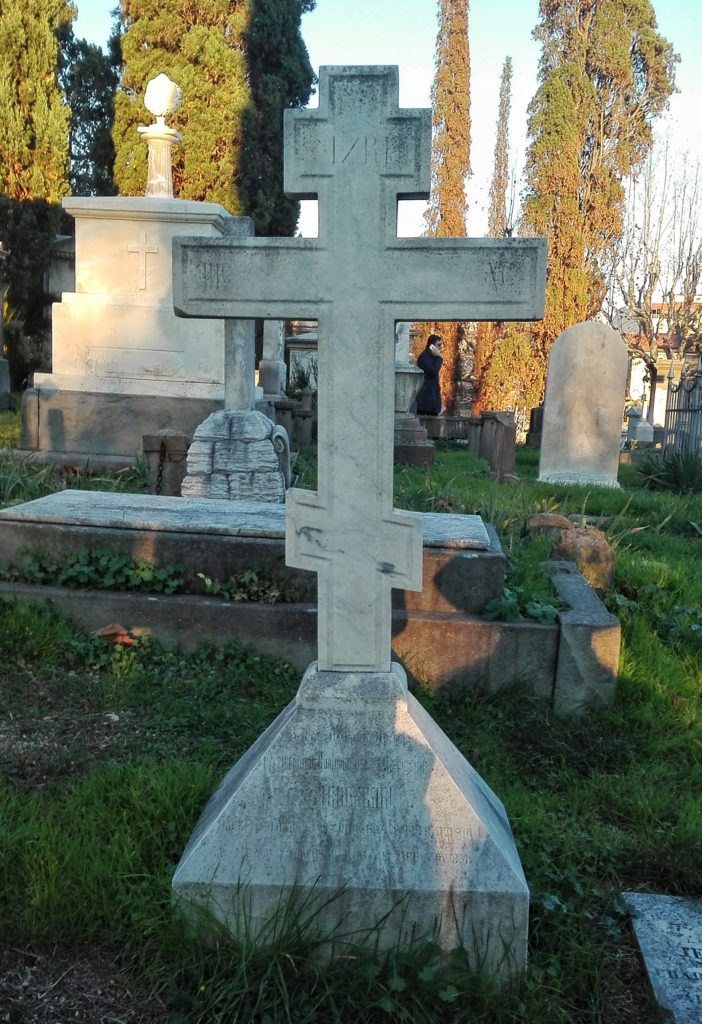
Other remarkable tombs
The most curious statue is the one of the Grim Reaper holding a sickle, a classic of funeral iconography but rarely seen in Italian graveyards. Wandering through the pathways you encounter angels, old gentlemen suffering pain and covered in delicate marble lacework, and a plethora of Victoriana funeral symbology.
Also noteworthy is the marble commemorative column that rises from the middle of the cemetery at the junction of the two main paths. It was donated by Frederick William IV, King of Prussia.
But the most famous statue is definitely the one on the grave of Arnold Savage Landor, depicting his mourning mother Julia wife of Walter Savage Landor.

Visiting the English cemetery
In the 1990s the English cemetery of Florence reopened for burials, although places are few, exclusive to Protestants, and restricted to the interment of ashes. Places are of course rather expensive, with money needed for the site’s restoration (it was recently damaged by a thunderstorm).
If you are not one of those lucky few who can stay here forever, you can still visit while alive! Thanks for this are due to Sister Julia Bolton Holloway, a gentle elderly nun who for nearly 20 years has taken care of the cemetery’s maintenance and public opening. You can thank her by making even a small donations at the site.
Tip: if possible, visit between the end of April and mid-may when iris is in bloom around the tombstones.
Opening hours: Mondays from 9am to 12pm, Tuesday to Friday from 3pm to 6pm. Closed on weekends.
Private Tours of the English Cemetery of Florence
Do you want to take a private guided tour of the English Cemetery of Florence? Contact me for more information (and also check my other tours of the cemeteries of Florence)!
- Duration: 1 hour and a half
- Meeting Point: at the entrance gate of the cemetery (piazzale Donatello)
- Included: your licensed local tour guide
- Not included: transportation
